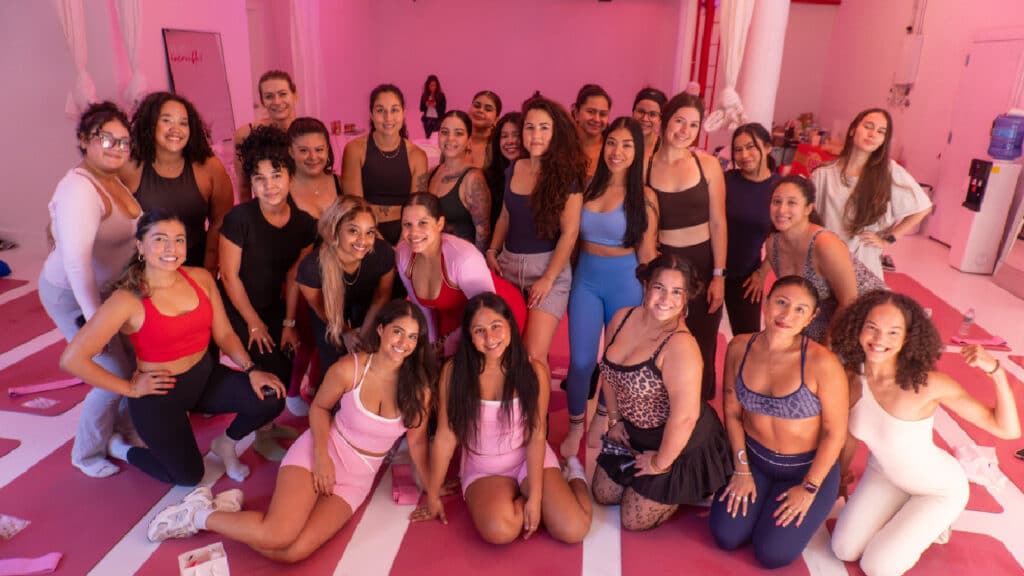The Pain is Real: Our FIERCE Audience Shares the Truth About IUD Experiences
A few months ago, the trend of women sharing on TikTok the insertion or removal of their IUDs left us paralyzed. What made us think that it only hurt us? More to the point, why hasn’t anyone done anything about it to ease our pain?
In fact, after watching those videos, the fact that scientific studies say “some discomfort or pain may occur” with the insertion of an IUD strikes us as pure and simple cynicism.
That’s why we decided to ask our FIERCE audience about their experience, and the answers have floored us.
But, first of all, here’s what an IUD is all about
Called an intrauterine device (IUD), it is a T-shaped contraceptive device that is inserted into the uterus to prevent pregnancy. In general, IUDs prevent pregnancy by reducing the ability of sperm to reach the egg to fertilize it.
There are two types of IUDs: hormonal and copper. The former releases progestin, a synthetic version of the hormone progesterone. The hormone causes the cervical mucus to thicken, which prevents sperm from entering the uterus and reaching the egg.
Copper IUDs, on the other hand, do not contain hormones but a small amount of copper, which triggers an immune response in the uterus, creating a toxic environment for sperm.
A hormonal IUD can remain in place for up to eight years, depending on the brand. The four brands currently available in the United States are Mirena® (approved for up to eight years), Liletta® (up to eight years), Kyleena® (up to five years) and Skyla® (up to three years).
The copper IUD, sold under the brand name Paragard®, is approved for up to 10 years. At the expiration date, the woman can remove the IUD and replace it with a new one.
The IUD is a more ‘comfortable’ alternative for many women
We all know what happens when we use the pill or the implant. Our hormones can get out of whack, and sometimes, we simply don’t have the discipline to go through with the treatment. That’s why women like Nissa Garcia choose the IUD.
“[I chose it] for convenience, actually,” she told FIERCE. “Besides the pill, I had tried the ring, and it didn’t work for me.” For Leandra Carmona, the decision came four months after giving birth. “At first I was skeptical because I had never taken any type of contraceptive,” she told us. “I chose an IUD because it’s a one-time procedure, and the efficacy rate is about 92%.”
This is true. IUDs are one of the most effective forms of reversible contraception. They have a typical failure rate of less than 1% in a year. “I wanted something that was effective, but I also didn’t want it to change my body completely,” Carmona added.
For others, it is an alternative for menstrual cycles with heavy flow, but also to circumvent anti-abortion policies in the United States.
As Lisa Alcantara told us, the IUD was an alternative for her heavy menstruation. “I struggled with heavy menstrual cycles and heavy 8-day bleeding since I started my period at age 13. For 6 years, I had to fight the leaks with both a tampon and a pad almost every month. At 18, I finally saw an OB/GYN (thank you, Dr. Brody!) specializing in treating heavy-flowing menstrual cycles. After a year of trying half a dozen birth control pills, he suggested I get the Mirena IUD.”
For Hannah, meanwhile, who preferred to remain anonymous, the decision had to do with politics. “The day after the 2016 election, I made the decision to get an IUD because I saw all the talk about how they were coming for Roe and birth control soon,” she said. “I figured it would take someone much longer to rip something out of the cracks in my body than it would to pull something off the shelves that I have to keep replenishing.”
Hannah added she also wanted something she didn’t “have to think about.”
“I didn’t want to have to rely on pharmacy opening hours, setting alarms on my phone to take pills, etc.”
When it comes to making the decision to use an IUD, women count on their gynecologists — at least most of the time
Although the IUD is one of the most effective forms of contraception, it is still not used as much as other contraceptive methods. This may have to do with access to information and cultural context and the fact that it doesn’t protect from STDs.
“I was 22 years old and had just given birth to my second baby while on the pill,” said Irene Espinoza. “At the time, I was not well informed about contraceptive options and considered the Mirena to be a foolproof method to avoid pregnancy.” She added that, unfortunately, she did not have enough information before deciding.
“I felt scared and overwhelmed with anxiety. Growing up in a Catholic home where birth control and premarital sex were taboo subjects, I was deeply influenced by these beliefs,” Espinoza explained. “There wasn’t much to do. I went to a free clinic where I was simply asked if I wanted to have more children. When I said no, they offered me the Mirena without much discussion or explanation.”
“On reflection, I would rate the quality of information and guidance provided by my healthcare professional before the procedure as inadequate,” she continued. “However, I also recognize that my own upbringing played a role. In my home, discussions about sex were taboo, which made me feel naïve and uninformed about contraceptive options.”
For the other Latinas who contributed to this story, the support of their gynecologists was crucial. “Overall, I felt like my health care provider worked closely with me,” said Lisa Alcantara. “I have a great OB/GYN; they always address my concerns and questions. I highly recommend finding a gynecologist that you feel 100% comfortable with,” said Leandra Carmona.
In general, these women didn’t know much about what to expect
The primary goal of anyone inquiring about an IUD is one: not to get pregnant. However, the lack of information and communication causes myths to multiply.
“I was worried about having heavy periods or no periods and gaining weight,” said Nissa Garcia. “I was also worried about having my ‘tail’ cut too short or too long. An acquaintance of mine had it cut too long and stabbed her husband’s penis during intercourse. During my research, I read that some women had had their ‘tails’ cut too short, and at the time of removal, it hurt more.”
“My gynecologist told me about the advantages of having an IUD before I made my insertion appointment,” Alcantara shared. “I also did a lot of research on Google, looking myself up on WebMD and Googling other women’s experiences. However, I based my decision mainly on the conversation I had with my Tia, who is [a registered nurse], and I got most of my information from her before I made my decision.”
“I was a little concerned about the fact that my gynecologist mentioned that the IUD [at the time] was not usually given to women who had not been pregnant before, as the IUD is inserted into the uterus and has to contract to insert it,” she added. “I had been warned that it might be painful because I had never been pregnant.”
For most of the women, the procedure was the same
The women who told their story to FIERCE described a standardized procedure. Arriving before the appointment, signing consent forms, and “relatively direct” communication with the doctors. “I felt some pain, similar to strong menstrual cramps,” said Irene Espinoza. “However, the whole process took no more than five minutes.”
“On a scale of 1 to 10, I would rate the IUD insertion an 8. Although I have never been pregnant, so I have never been in labor, I imagine the pain I experienced during and after the insertion was similar to labor contractions,” said Lisa Alcantara. “Imagine the worst menstrual pain you’ve ever experienced and double it. Then, I drove home and immediately regretted it. I felt like I was going to pass out from the intensity, and I even had to stop the car for a few minutes to regain my composure. Despite taking Tylenol, the pain continued until the next morning.”
For Leandra Carmona, the pain was a 9. “It was extremely painful. But it lasted less than 5 minutes. The IUD insertion felt like an uncomfortable pinch while I was cramping.” For her part, Nissa Garcia, who had experience with labor pain, the pain was around a 4. “But the cramping for the rest of the day was pretty bad. They seemed like light/moderate contractions or like the cramps you get on the heaviest day of your period. They were controlled with a heating pad and Tylenol.”
If the experience is painful, why don’t doctors use anesthesia?
We have previously discussed the lack of medical research on women’s specific health and needs. So don’t judge us if we are biased.
One way or another, the medical journals all seem to agree that anesthesia is not necessary in the case of IUD insertion or removal because “most women find the procedure acceptable,” and local anesthetics “do not necessarily help with uterine cramping after the procedure.”
“Local anesthesia is not routinely used during IUD insertion because it doesn’t necessarily help with uterine cramping that can occur [afterward],” Dr. Amanda Black, professor of Obstetrics and Gynecology at the University of Ottawa, told Chatelaine Magazine.
“Local anesthesia can be used, but it needs to be discussed in advance to make sure it’s available at the time of the procedure,” says Dr. Amanda Selk, an obstetrician and gynecologist at Mount Sinai Hospital in Toronto.
So, it seems to be a matter of practicality when performing the procedure.
However, since every patient experiences sensation differently, “discussing pain management options and the range of possible pain is paramount to building trust between patient and physician and ultimately providing the best care for patients in the long run,” according to Megan Wasson, DO, chair of the Department of Medical and Surgical Gynecology at Mayo Clinic Arizona, in Phoenix.




